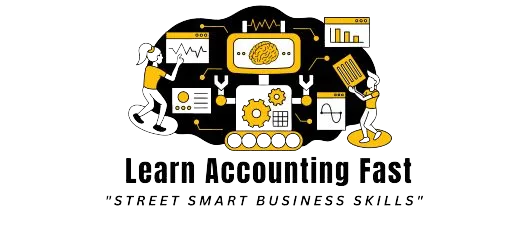How to Perform a Breakeven Analysis from a Cash Perspective
Understanding your business's financial health is crucial. One effective way to do this is through breakeven analysis.
This analysis helps you know when your business will start making a profit.
Specifically, we'll focus on doing a breakeven analysis from a cash perspective.
What is Breakeven Analysis?
Breakeven analysis determines the point at which your business's revenues equal its costs. This is your breakeven point.
At this point, you are not making a profit, but you are not losing money either.
Why Use a Cash Perspective?
Using a cash perspective means you focus on cash inflows and outflows. This approach helps you understand the actual cash needed to keep your business running.
It's different from an accrual perspective, which considers earned revenue and incurred expenses regardless of actual cash movement.
Step-by-Step Guide
Identify Fixed Costs
Fixed costs do not change with the level of production or sales. Examples
include rent, salaries, and insurance. Gather all your fixed costs. Example: Rent - $2000, Salaries - $3000, Insurance - $500

Identify Variable Costs
Variable costs change with the level of production or sales. Examples include raw materials and direct labor. Determine the cost per unit of product or service.
Example: Raw materials - $5 per unit, Direct labor - $3 per unit
Determine Your Selling Price
Set your selling price per unit. This is how much you charge customers for one unit of your product or service.
Example: Selling price per unit - $15
Calculate Contribution Margin
Contribution margin is the selling price per unit minus the variable cost per unit. This margin contributes to covering fixed costs and generating profit.
Formula: Contribution Margin = Selling Price per Unit - Variable Cost per Unit
Example: $15 (selling price) - $8 (variable costs) = $7 (contribution margin)
Compute the Breakeven Point in Units
The breakeven point in units is the number of units you need to sell to cover all your fixed and variable costs.
Formula: Breakeven Point (units) = Fixed Costs / Contribution Margin per Unit
Example: $5500 (total fixed costs) / $7 (contribution margin) = 785.71 units You need to sell at least 786 units to break even.
Calculate the Breakeven Point in Revenue
To find the breakeven point in terms of revenue, multiply the breakeven point in units by the selling price per unit.
Formula: Breakeven Point (revenue) = Breakeven Point (units) x Selling Price per Unit
Example: 786 units x $15 = $11,790
You need $11,790 in revenue to break even.
Tools for Breakeven Analysis
Several tools can help simplify breakeven analysis. Here are some
recommendations:
Microsoft Excel Excel is a powerful tool for financial analysis. You can use it to create detailed breakeven analys is spreadsheets. Learn more about using Excel for financial analysis here.
Google Sheets Google Sheets offers similar functionalities to Excel and is accessible online. It’s great for collaboration and real-time updates. Start using Google Sheets for free here.
Breakeven Analysis Calculators Online calculators can quickly provide breakeven points based on your inputs. These tools are user-friendly and can save time. Try a free breakeven analysis calculator here.

Practical Tips
Regularly Review Costs: Costs can change. Regularly update your fixed and variable costs to ensure accurate
analysis.
Monitor Sales Trends: Sales can fluctuate. Keep an eye on sales trends to adjust your breakeven analysis accordingly.
Plan for Contingencies: Unexpected expenses can arise. Include a buffer in your analysis to account for these.
Conclusion
Performing a breakeven analysis from a cash perspective is vital for understanding your business's financial health.
By focusing on actual cash inflows and outflows, you can make informed decisions to ensure your business stays on track.
Use tools like Excel, Google Sheets, and online calculators to streamline the process.
Regularly update your data and plan for contingencies to maintain accuracy.
Understanding your breakeven point empowers you to manage your business effectively, ensuring long-term success.
Now is the perfect time to invest in your greatest asset - YOUR BUSINESS AND FINANCIAL EDUCATION.
It's time to thrive in these trying times by taking advantage of this opportunity for personal growth.
Be the greatest you can be… Join us, click the link below for short, sharp, simple video courses
that give you confidence and street-smart business skills to succeed.
Latest Posts
The Six Laws of
Wealth Creation
The Six Laws of Wealth Creation. These timeless actions work in 2025’s rapid-change environment and give you calm, repeatable steps to grow money.....
How to Read Business
Financial Reports
A Story of Business Secrets Hidden in Reports
Sarah sat in her office staring at a thick folder of financial reports. Sales, costs, cash flow....
The Millionaire
Mind in Action
Timeless Wealth, Flow, and Power from Robert Kiyosaki,Frank Kern, Tony Robbins
and Open Ai......
Why Cost Control Is the Forgotten Key to Profitability
Most entrepreneurs chase sales growth like it’s the only thing that matters.They spend thousands on ads, new products, and fa ncy offices.....
Master Prompts For
Financial Analysis
The Complete Small Business Guide to Financial Analysis: Formulas, Examples, and Tips.These are super-powerful questions you can ask an AI to help..
How To Solve Any Business
Problem With Ai
AI can help you solve all of these faster, smarter, and more affordably, if you know how. This guide will show you exactly how to do that.........
Disclaimer: The content shared on this blog and in these videos is for informational and educational purposes only. Despite my 30 years of experience as a business owner, I am not a certified financial advisor, accountant, or legal professional. The insights and tips shared are based on personal experiences and should not be taken as professional financial or legal advice. For financial, legal, or professional advice, please consult with a certified professional in the respective field. I disclaim any liability or responsibility for actions taken based on any information found in this blog or these videos.
Copyright Learn Accounting Fast - All Rights Reserved 2025









Facebook
Instagram
X
LinkedIn
Youtube